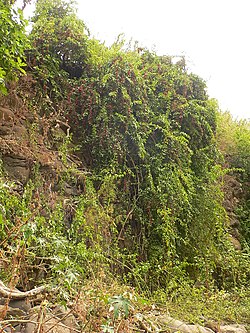| Bosea | |
|---|---|
 | |
| Bosea yervamora | |
| Scientific classification | |
| Kingdom: | Plantae |
| Clade: | Tracheophytes |
| Clade: | Angiosperms |
| Clade: | Eudicots |
| Order: | Caryophyllales |
| Family: | Amaranthaceae |
| Subfamily: | Amaranthoideae |
| Genus: | Bosea L. |
| Species | |
See text | |
Bosea is a genus of evergreen, woody shrubs contains 3 species that are geographically widely separated; one in the Canary Islands, one in Cyprus and one in the western Himalayas. [1] The species have many crowded cane-like stems from ground level grow to medium to tall shrubs, smallish simple leaves with smooth margins, and tiny white-to-green flowers in branched spikes at end of branches. The fruits are small berries, which have varied local uses as food plants and in traditional medicine.